August 13, 2023
Sailing from the tropical archipelago of Vanuatu to Indonesia on the other side of the Great Barrier reef of Australia took us 12 days. The waves seemed endless, coming from all directions and the horizon just an expanse of water as we sailed westward toward Indonesia. Every sunrise heralded a change of sails for faster sailing, every sunset another dark night with disappearing moon and the noisy sound of unseen waves hitting the boat. When you’re out at sea for a long passage, you have a lot of time to ponder and let the vastness seep into your soul.
Our aim was to reach the Great Barrier Reef during the safety of daylight, but the unpredictable temperament of the sea had other plans. The sun began its descent just as we neared the Raine passage through the reef, casting a golden hue over the horizon, rapidly fading to twilight. Entering the channel of the reef, the encroaching darkness enveloped us. It being high tide, a time when waters crash over the reef to the typically more placid waters on the other side, the waves maintained their vigor once inside the passage. Rather anchoring as planned, amidst this uncertainty we opted to venture further, steering our vessel through the dark night, guided by radar and our navigation charts.
Once on the other side of the reefs, navigating through the Indonesian waters was akin to threading through an intricate spiderweb of obstacles at sea. Sailing at night was a mesmerizing display of AIS signals on our nautical charts, with both fishing boats and their deployed buoys obstructing our path in patterns reminiscent of an arcade game from yesteryears. By day, the vast expanse transformed into a spectacle of fishing boats, in relentless pursuit of the ocean’s bounty. This nightly parade of decrepit fishing vessels left us pondering, what would remain of the marine life in these once abundant waters?
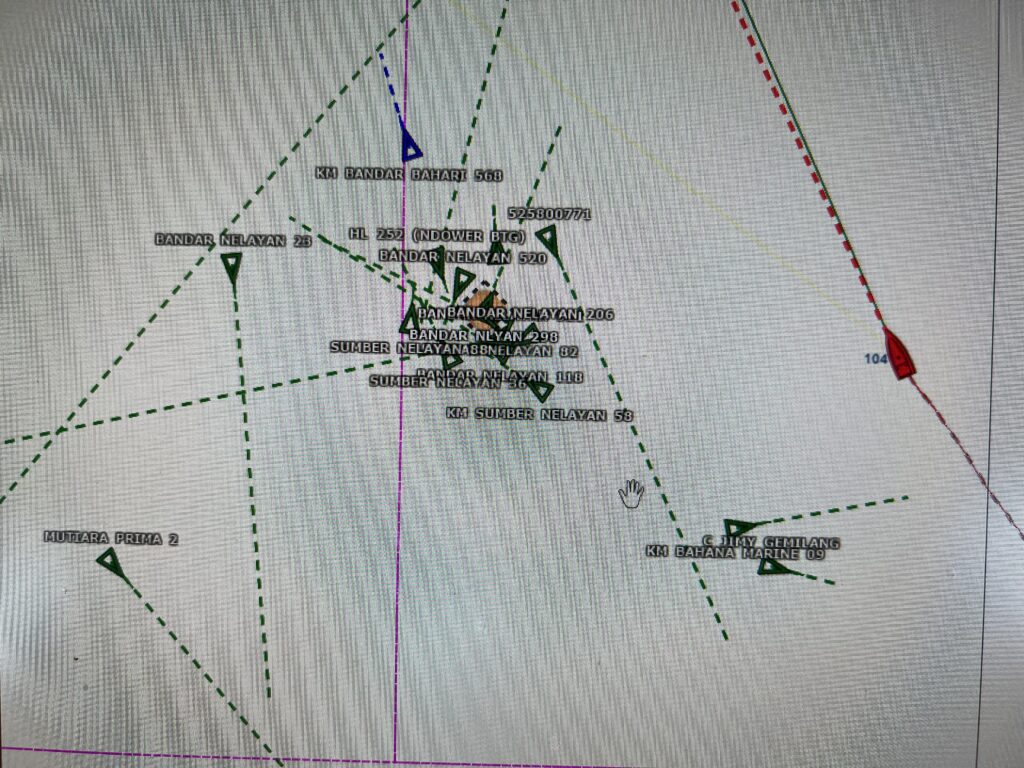
Upon arriving in Indonesia, we were greeted not by the bustling activity of a typical port, but by the necessary procedures when one enters a new country. Quarantine, health, customs, and immigration officers each visited the boat in turn. Their method of documenting our arrival was both formal and charmingly quirky. At every step, they’d take pictures—of us, the boat, our paperwork—and with an enthusiastic exclamation of “documentation!” they’d take cheeky selfies of themselves in various rooms of the boat. It was a modern welcome with a touch of humor that immediately endeared us to this new land.
After all the formalities, our voyage continued to Raja Ampat—a paradise for diving enthusiasts like us. Its underwater world, rich in vibrant marine life, beckoned us to explore different reefs. The underwater realm teemed with vibrant marine life, from soft corals and nudibranchs to a kaleidoscope of reef fish. Amidst this bounty, different species of dancing clownfish in colorful sea anemones were always my favorites. A month might sound lengthy, but the beauty of Raja Ampat is so captivating that time feels suspended. Making our trip even more special was the arrival of our dear friend from Boston, Catherine Brown. Her shared enthusiasm made our dives more memorable.
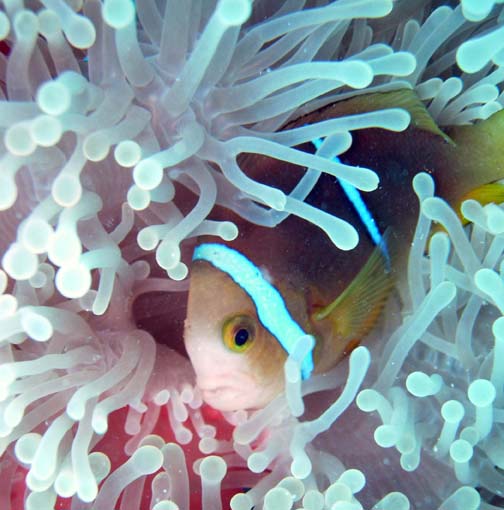
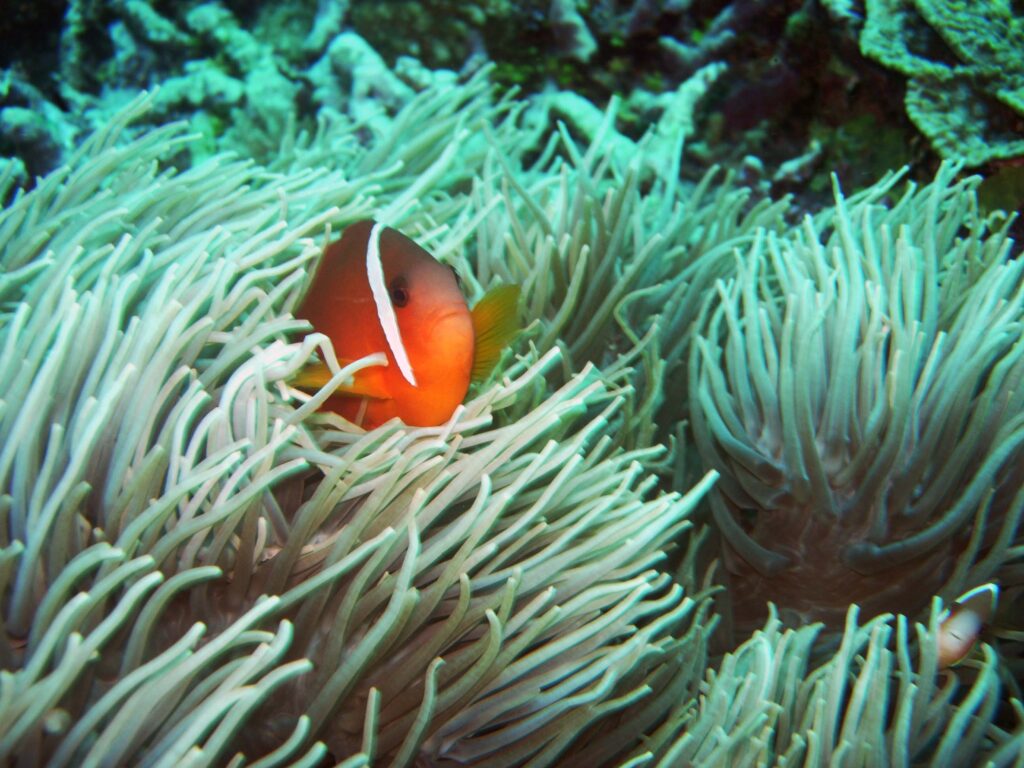
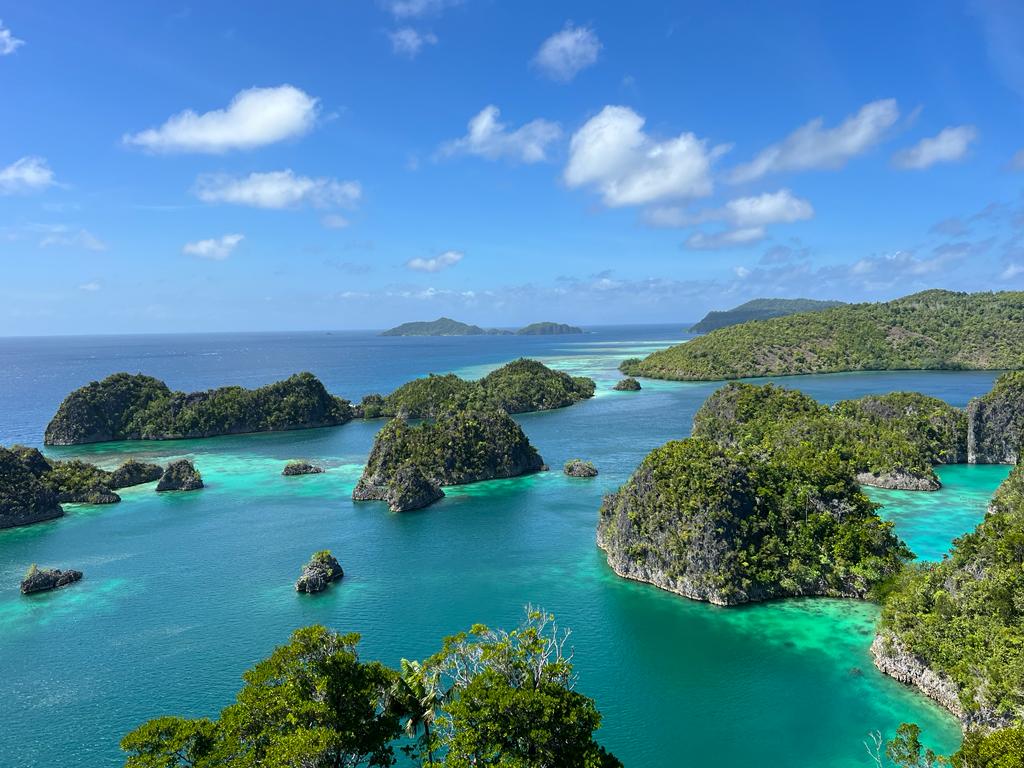
Leaving the clear waters of Raja Ampat behind, our next destination was Wangi Wangi in the Wakatobi region. The timing couldn’t have been more perfect as the town was alive with the colors and sounds of a women’s festival. The resonating music, the intricate dances performed by local children, everything was a testament to the warmth of the Indonesian people. Here we met with old friends as boats from the Grand Large Yachting World Odyssey Rally (GLYWO) started to arrive from their different sailing route via Australia. The real highlight of Wangi Wangi, however, were the friendly locals. We found ourselves adopted by a group of 17-year-old schoolgirls who, with sparkling eyes and infectious laughter, gave us tours of the fishing village and main town. Their pride in their home, their joy in sharing it, made Wangi Wangi an unforgettable stop.
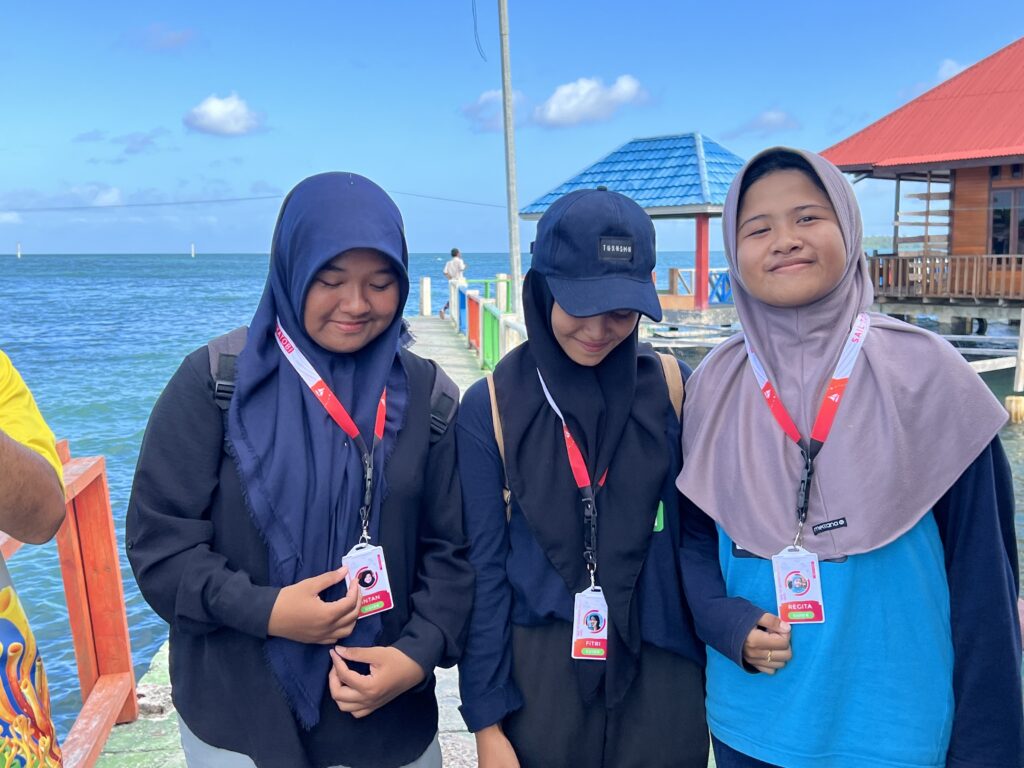
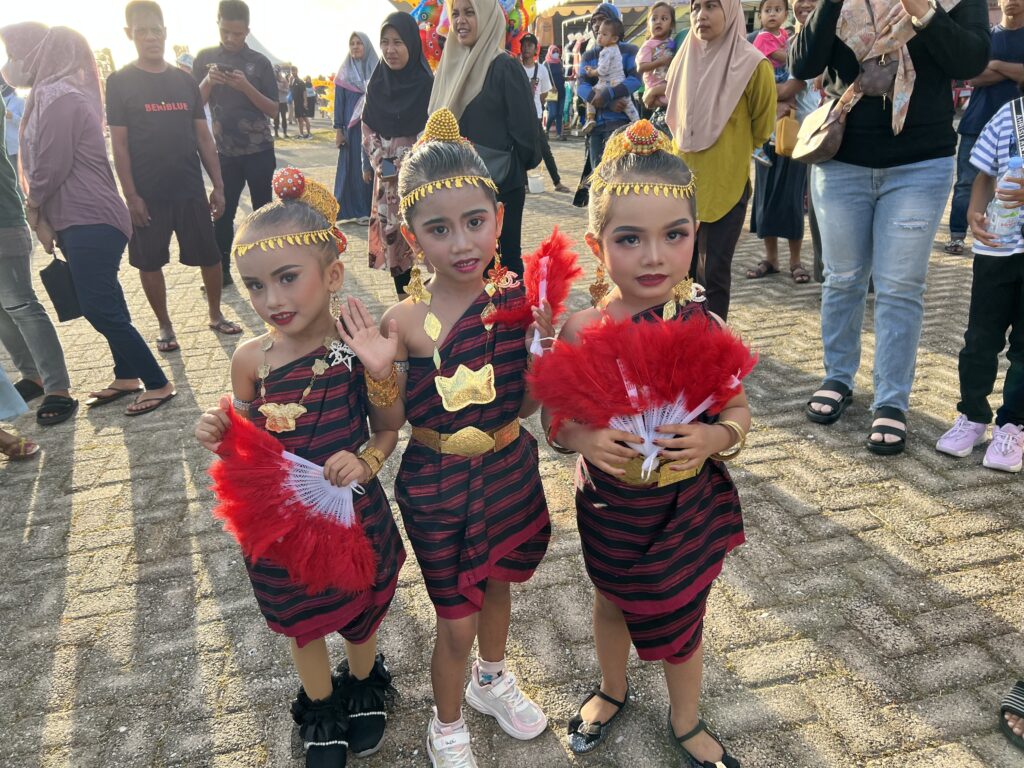
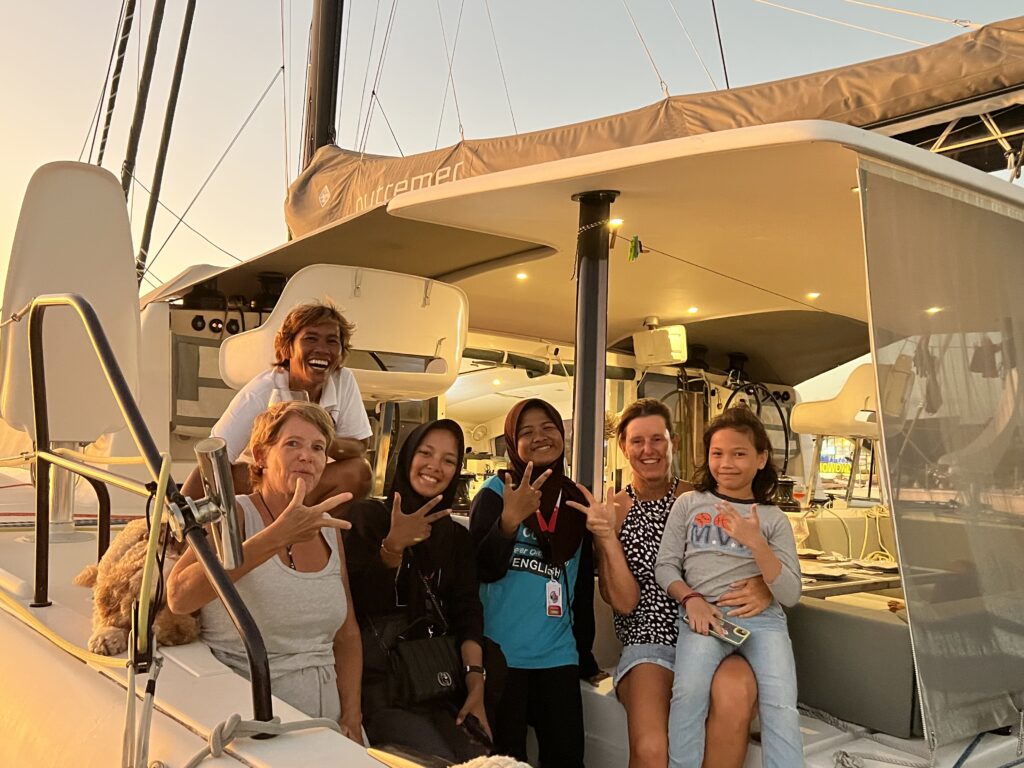
Our journey in Indonesia also had its fair share of bureaucratic pauses. One such break came in the city of Bau Bau, where we awaited our visa renewal. Unlike prior ports of call, Bau Bau had its own unique pulse – teeming with life yet oddly lacking in quality eateries, and a complete absence of alcohol even in the finest hotels. This restriction cast a more subdued ambience than what we had previously experienced in our voyages. While the initial assurance was that our visa would be renewed in one day, two days passed with no progress. A discreet financial nudge expedited matters. Armed with our freshly renewed visa before other sailors in the rally, we swiftly set our course for more accommodating shores.
Currently, we find ourselves in the marine park of Taka Bonerate Marine Park located in the Flores Sea. Anchored within a pristine atoll, with its crystal-clear turquoise waters, feels like nature’s reward for our patience. As our boat floats gently on the serene waters, and we prepare to dive into another wonderland below, we can’t help but be grateful. This journey, with all its highs and lows, challenges, and surprises, has been a true odyssey. The world is vast, filled with stories waiting to be lived, and our chapter on the Grande Large Yachting World Odyssey Rally is but a small, beautiful part of it.
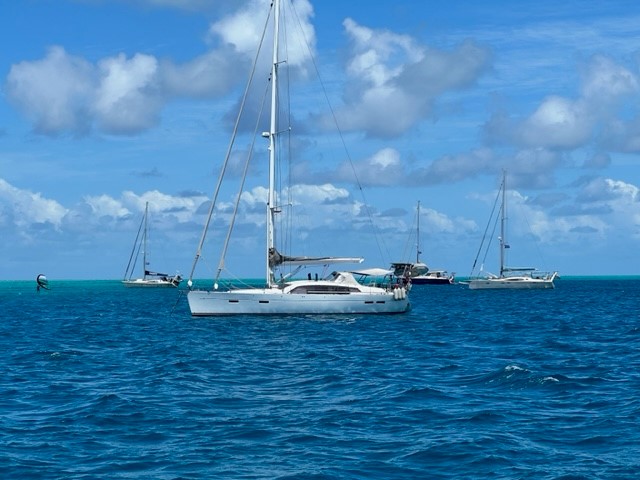
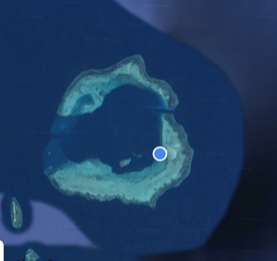
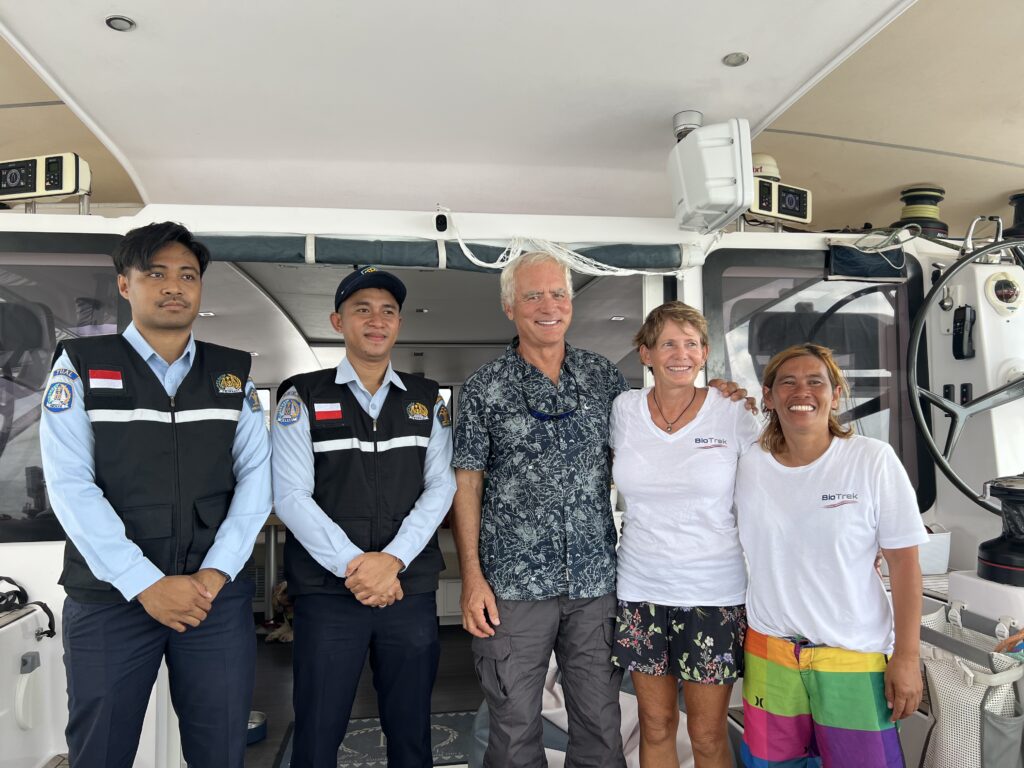
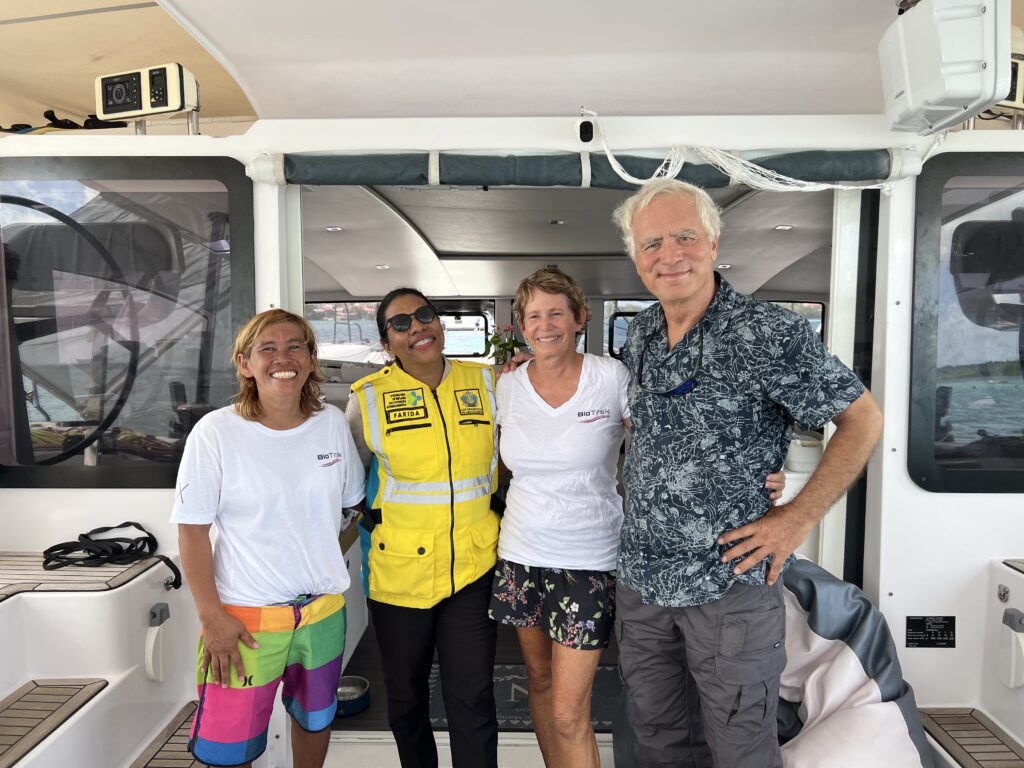
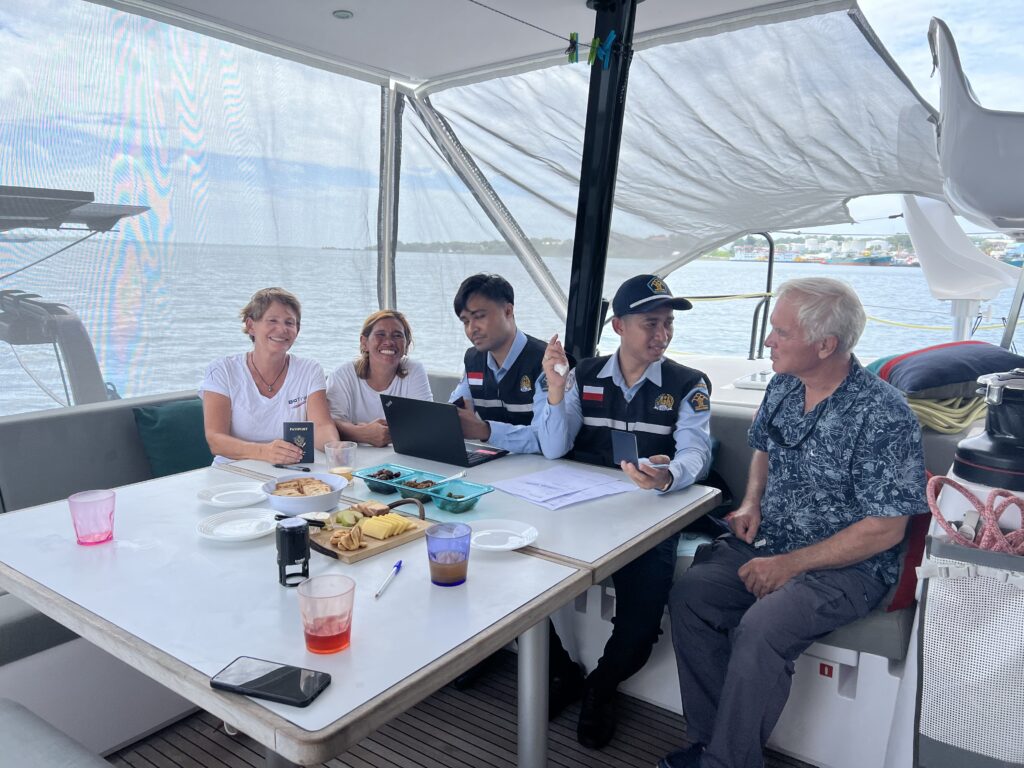
Lisa, this captures our experience perfectly. Especially the tours with the young women from Wangiwangi. Their joy at being able to be our guides was disarming. Their continual baby curtsies as a friendly way of greeting or saying thank you endearing and I loved the enthusiasm from everyone every time we have an American “high five”. This has truly been an experience I will never forget. Thank you to you an Pierre for an opportunity of a life time.
P.S. A Michelin Star should be given to Luma. Her food has been amazing,….and at the same time incredibly healthy! We haven’t had the same meal twice in 2 weeks!
Enjoyed catching up on brought this read. 😉